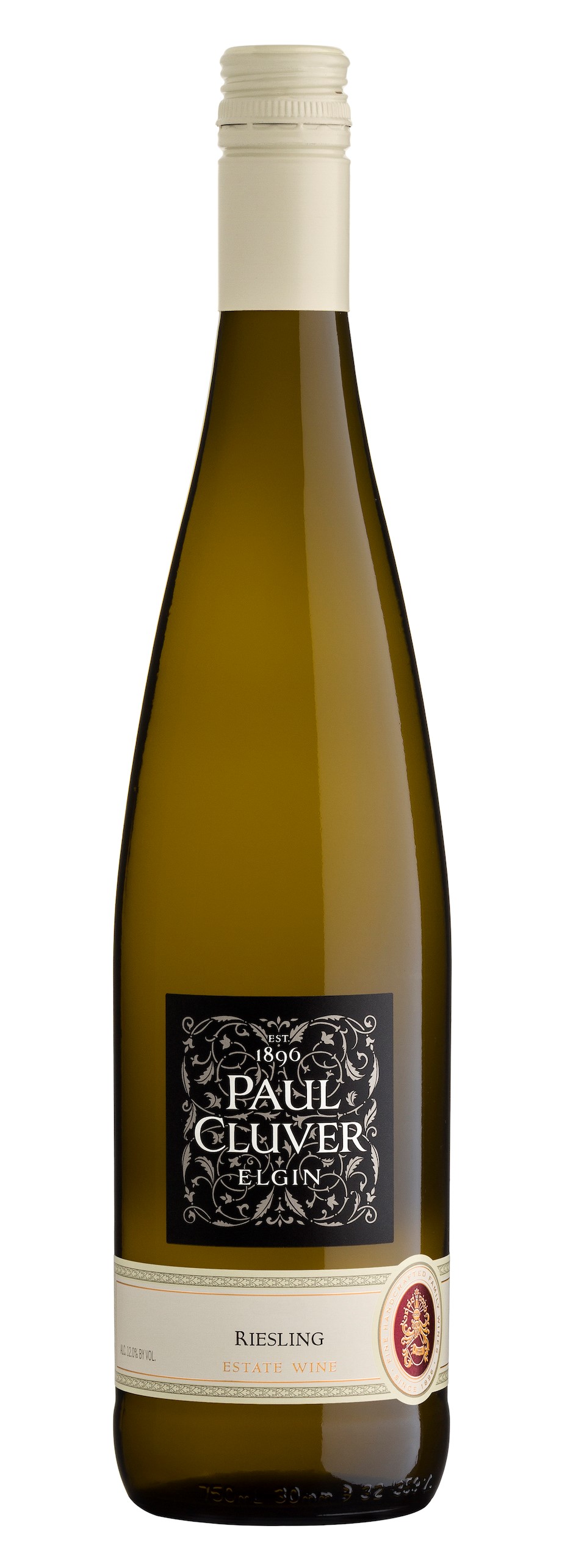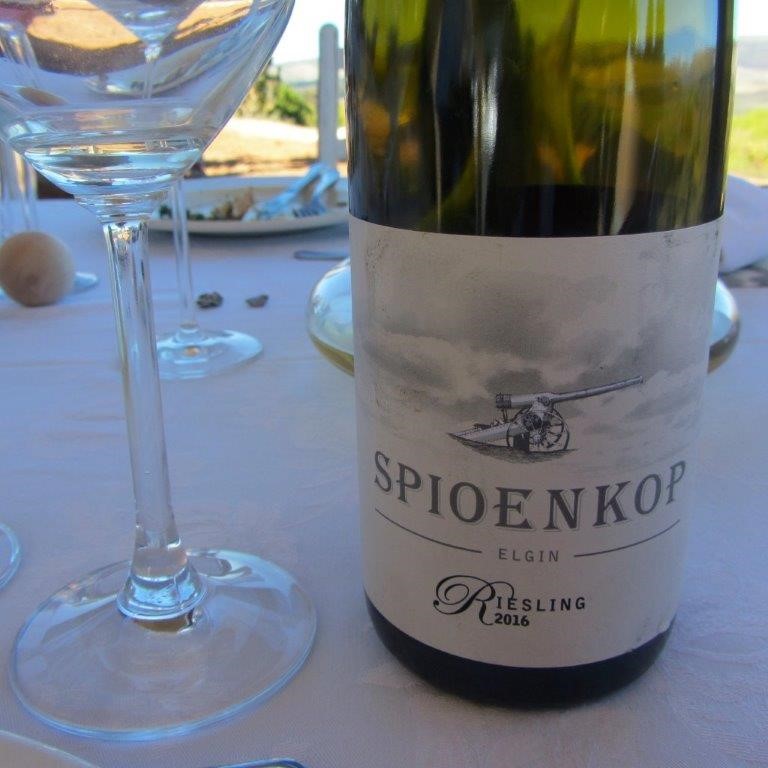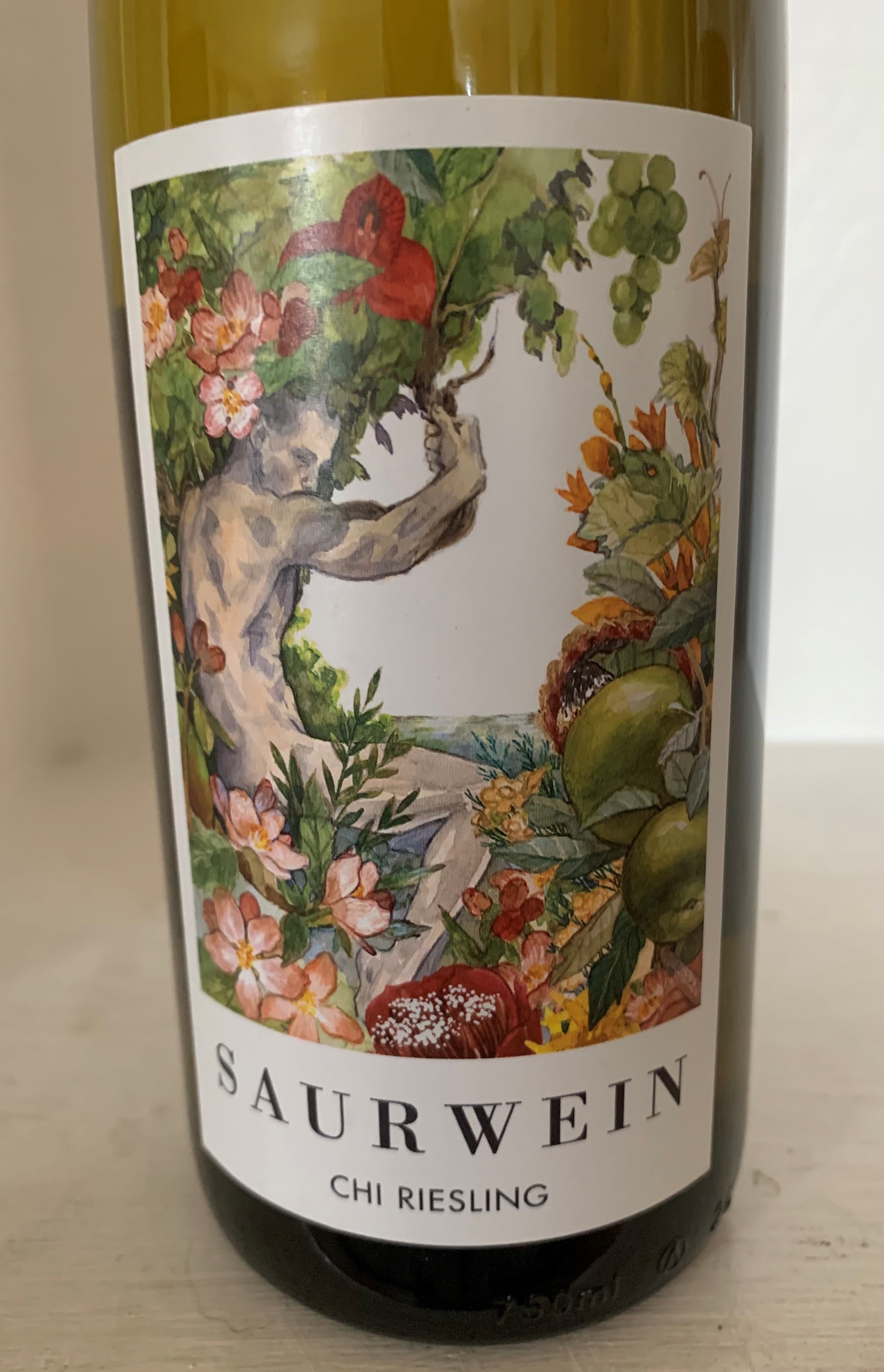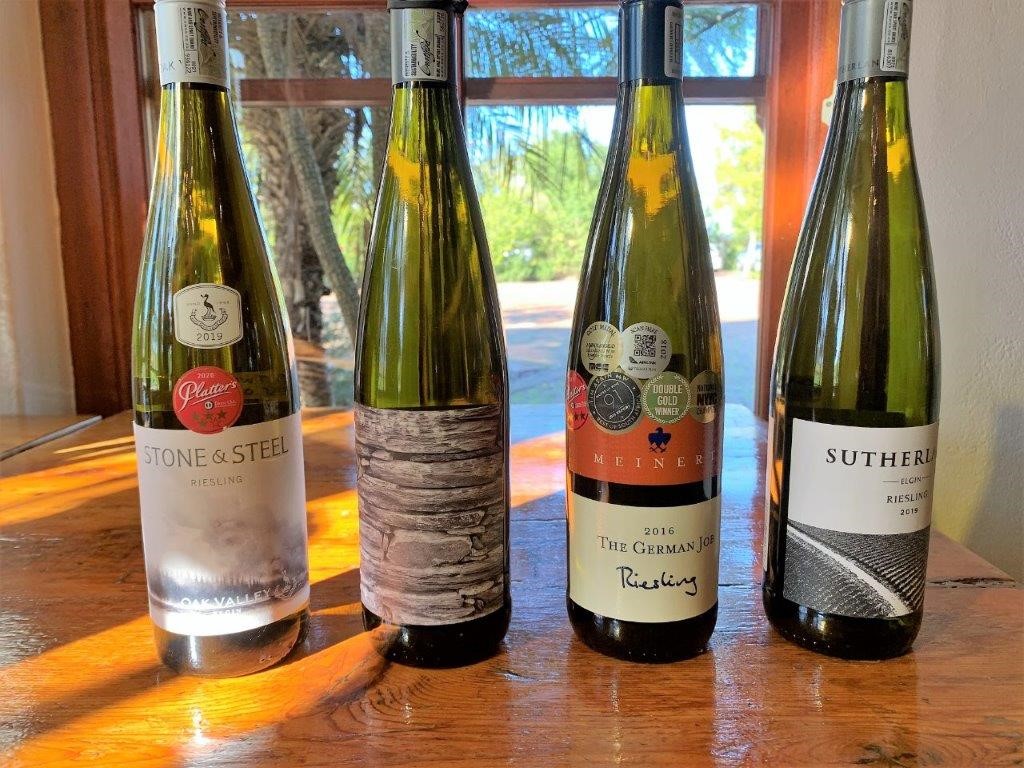Elgin Riesling
Which grape variety do you most associate with Elgin? Chardonnay, Pinot Noir or Sauvignon Blanc? How about Riesling? What, Elgin produces Riesling?
At a recent comprehensive tasting of South African Rieslings, those from Elgin stood out for their quality. What is it about this cool-climate area that suits this finicky grape? I asked three producers whose wines much impressed guests at the tasting.
Andries Burger, winemaker at Paul Cluver for the past 25 years, knows much about the area and Riesling. There are three blocks on the farm, aged 33, 14 and 11, the former two all or partly on ferric rete, a sedimentary rock with iron oxides; it also gives its name to one of the Cluver Rieslings. The estate Riesling comes from the three blocks, each fermented separately, ‘A difficult exercise knowing when to stop fermentation, then requiring lots of analysis and making pre-blends to ensure we have perfect balance in the wine,’ Andries explains. The farm’s renowned Noble Late Harvest is mainly drawn from the oldest vineyard where most botrytis develops.

Koen Roose, the Belgian owner/winemaker at Spioenkop, whose first Riesling was produced in 2011, maintains the variety needs poor, rocky soil, specifically ferric rete. ‘If the soil is too rich, the bunches will be too big; they’ll give you fruit but not texture.’ His focus is very much on viticulture; ‘Keep the canopy low and no fertilizing,’ is his advice.

Jessica Saurwein has been making Elgin Riesling under her eponymous label for only four years. Why Riesling? ‘It’s the queen of grapes,’ she affirms. ‘When the wine is good, there is nothing more exciting aromatically than this noble variety.’ Sourcing fruit from two vineyards around 300 meters above sea level, one just 10 km from the sea, Jessica harvests around 18 – 21 Balling with pH levels as low as 2.9, then it’s a hands-off approach in the cellar. ‘The best thing to do with Riesling is to step back and allow the grape to do the talking.’ She employs a little skin contact to extract the flavors, spontaneous ferment in tank, which can take up to two months, racking followed by bottling in winter.

How do each of these Riesling champions sum up why Elgin is able to produce such sterling wines? Andries puts it down to ‘A combination of the cool climate and the iron and clay rich Bokkeveld Shale.’ Koen reasons, ‘Riesling needs a cooler region to achieve perfect ripeness with lower sugar levels. It also needs a good long winter sleep to build up the precursors of the typical Riesling flavors.’ While he recognizes Elgin doesn’t have the same conditions as Germany, he believes ‘Elgin is blessed with good slopes for drainage, as Riesling doesn’t like wet feet, and the slopes are rockier with fewer nutrients.’
No region in South Africa grows more Riesling than Elgin’s 26.5ha; sadly, it’s unlikely to increase, apples being far more lucrative crop. South Africa as a whole manages just 126ha.
What Elgin lacks in quantity, it makes up for in quality. Think Elgin: think Riesling. Think Riesling: think Elgin. Not a bad mantra for this noble grape.

- Blog by Angela Lloyd